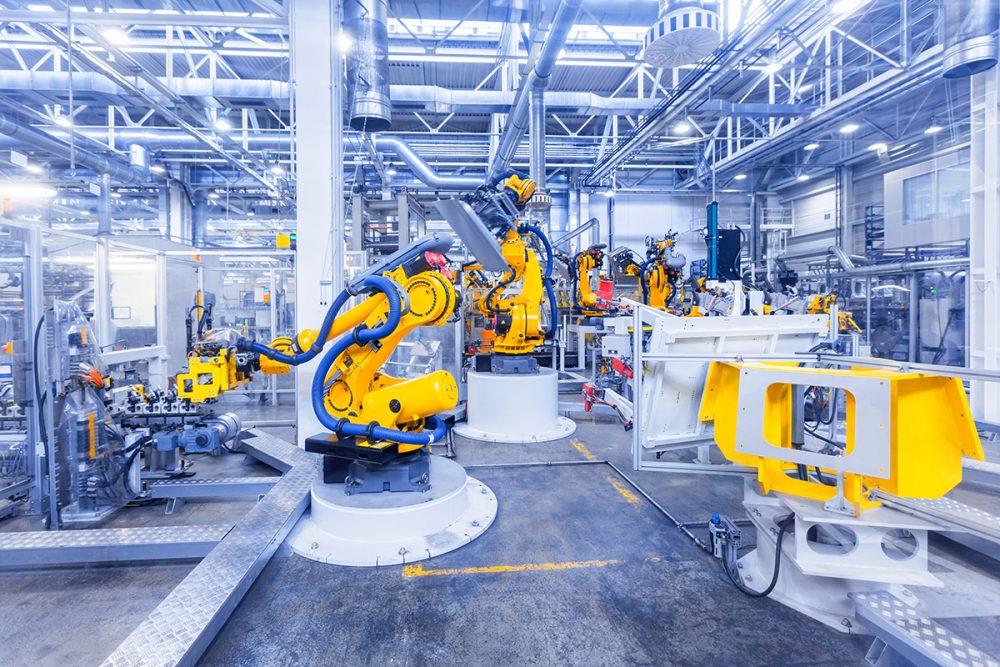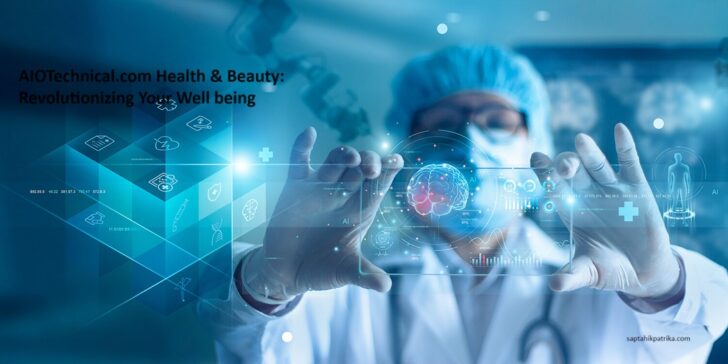In the rapidly evolving landscape of manufacturing industries, industrial automation solutions play a crucial role in enhancing productivity, efficiency, and competitiveness.
As technology continues to advance, new trends are shaping the future of automation in manufacturing. Let’s explore some of the key trends that are transforming the industry.
1. Internet of Things (IoT) Integration
The integration of Internet of Things (IoT) technology in industrial automation systems is revolutionizing the way manufacturing processes are monitored and controlled.
IoT enables machines, sensors, and other devices to communicate with each other in real-time, providing valuable data for optimizing production processes and predictive maintenance.
Industrial automation solutions leverage the Internet of Things (IoT) to create interconnected systems that optimize manufacturing processes. By integrating IoT technology, these solutions enable real-time monitoring, predictive maintenance, and data-driven decision-making, enhancing efficiency and productivity in industrial environments.
With real-time monitoring and analysis of data, manufacturers can make informed decisions quickly, identify potential issues before they escalate, and ultimately enhance the performance of their production lines.
Additionally, predictive maintenance enabled by IoT helps in reducing downtime and preventing costly equipment failures, ultimately leading to increased uptime and improved overall equipment effectiveness.
As a result, the integration of IoT technology in industrial automation systems is transforming traditional manufacturing processes and paving the way for smarter, more connected factories of the future.
2. Artificial Intelligence and Machine Learning
Artificial Intelligence (AI) and Machine Learning (ML) are increasingly being utilized in industrial automation to enhance decision-making, predictive analytics, and process optimization.
AI algorithms can analyze vast amounts of data to identify patterns and trends, enabling manufacturers to make informed decisions and adapt to changing market demands quickly.
Machine Learning algorithms can also improve the performance of automated systems by continuously learning from data and refining their processes.
AI and ML technologies are revolutionizing the way industrial processes are managed by providing real-time insights and predictive capabilities.
By leveraging AI and ML, manufacturers can optimize production schedules, reduce downtime, and improve overall operational efficiency.
These technologies can also enable predictive maintenance, which helps in identifying potential equipment failures before they occur, thereby minimizing disruptions and increasing productivity.
Ultimately, the integration of AI and ML in industrial automation is driving significant cost savings and competitive advantages for businesses across various sectors.
3. Robotics and Cobots
Robotics and Collaborative Robots (Cobots) are becoming integral parts of modern manufacturing facilities, working alongside human operators to perform a wide range of tasks.
Robotics automation offers increased precision, speed, and consistency in production processes, while Cobots provide a safe and flexible solution for human-robot collaboration.
The use of robotics and Robots in manufacturing is expected to continue growing as technology advances and costs decrease. With the advancement of technology, robotics and Collaborative Robots (Cobots) are revolutionizing modern manufacturing facilities.
These machines work in tandem with human operators, complementing their skills and enhancing productivity. Robotics automation ensures precise, fast, and consistent production processes, leading to higher efficiency and quality in manufacturing operations.
Cobots, on the other hand, offer a safe and flexible solution for human-robot collaboration, allowing for closer interaction between machines and workers on the factory floor.
The adoption of robotics and Robots in manufacturing is on the rise, driven by the need for increased productivity, improved quality control, and enhanced worker safety.
As costs for these technologies decrease and their capabilities expand, more companies are integrating them into their production lines.
The future of manufacturing is increasingly becoming automated, with robotics and Robots playing a crucial role in driving innovation and competitiveness in the industry.
4. Cloud Computing and Edge Computing
Cloud Computing and Edge Computing are transforming the way industrial automation systems are managed and operated. Cloud platforms enable manufacturers to store and analyze data in a centralized location, providing real-time insights and remote access to production facilities.
Edge Computing, on the other hand, processes data closer to the source, reducing latency and improving response times for critical applications. The combination of Cloud and Edge Computing offers a more efficient and scalable solution for industrial automation.
By leveraging both Cloud Computing and Edge Computing, industrial automation systems can achieve a balance between centralized data management and localized data processing.
This hybrid approach allows manufacturers to benefit from the scalability and analytical power of the cloud, while also ensuring low latency and high reliability for time-sensitive operations through edge devices.
Cloud platforms store vast amounts of data generated by industrial machines and sensors, enabling advanced analytics, predictive maintenance, and performance monitoring. This centralized storage also facilitates remote access to production facilities, allowing for real-time monitoring and control from anywhere in the world.
On the other hand, Edge Computing brings data processing closer to the devices generating it, reducing the need to send all data to the cloud for analysis. This not only minimizes latency but also enhances the security and privacy of sensitive information by keeping it within the local network.
The synergy between Cloud and Edge Computing in industrial automation systems streamlines operations, optimizes resource allocation, and enhances overall system performance. By combining the strengths of both approaches, manufacturers can achieve a more efficient, agile, and responsive automation infrastructure that meets the demands of modern industry.
5. Cybersecurity and Data Protection
With the increasing connectivity of industrial automation systems, cybersecurity and data protection have become paramount concerns for manufacturers.
Protecting sensitive data, preventing cyber-attacks, and ensuring the integrity of automation systems are critical for maintaining operational continuity and safeguarding intellectual property. Implementing robust cybersecurity measures, such as encryption, access controls, and network segmentation, is essential to mitigate risks and secure industrial automation environments.
Furthermore, manufacturers should regularly update and patch software, conduct security audits, and provide cybersecurity training for employees to enhance the overall security posture of their industrial automation systems.
Collaborating with cybersecurity experts and staying informed about emerging threats and best practices can also help manufacturers stay one step ahead in defending against cyber threats.
Ultimately, investing in cybersecurity is not only a business imperative but also a moral obligation to protect the sensitive data and operations of both the company and its customers.
6. Augmented Reality (AR) and Virtual Reality (VR)
Augmented Reality (AR) and Virtual Reality (VR) technologies are being leveraged in industrial automation to enhance training, maintenance, and remote assistance processes.
AR and VR solutions provide immersive experiences that enable operators to visualize complex systems, troubleshoot issues, and receive guidance in real-time.
By integrating AR and VR into automation systems, manufacturers can improve operational efficiency, reduce downtime, and enhance overall productivity.
AR and VR technologies are revolutionizing industrial automation by offering advanced training modules, interactive maintenance guides, and remote assistance capabilities.
These cutting-edge solutions provide a hands-on and realistic approach to learning and troubleshooting complex machinery and systems.
By utilizing AR and VR in automation processes, manufacturers can streamline operations, minimize errors, and empower their workforce with innovative tools for enhanced productivity and efficiency.
The integration of AR and VR into industrial automation is paving the way for a more connected and intelligent manufacturing environment.
Conclusion
Industrial automation solutions are continuously evolving to meet the demands of modern manufacturing industries. By embracing key trends such as IoT integration, AI and ML adoption, robotics and Cobots utilization, Cloud and Edge Computing implementation, cybersecurity measures, and AR/VR technologies, manufacturers can unlock new levels of efficiency, agility, and competitiveness. As technology continues to advance, staying informed about the latest trends in industrial automation is essential for manufacturers seeking to stay ahead in a rapidly changing industry.










